
Updated 6/9/2015 11:00 pm EDT
Severe storms moved across northwest Indiana during the late afternoon and evening of June 7th, 2015. A majority of the damage occurred in southern Starke County and Northern Pulaski County, Indiana. A survey team found evidence of a tornado northwest of North Judson, on the north end of the storm.
In coordination with Starke County Emergency Management, a storm survey was conducted in the areas hardest hit by the storm. The worst damage occurred northwest of North Judson on the northern portion of the storm, where a garage was shifted off it's foundation and numerous trees were downed. Additional wind damage was observed near Medaryville, Clarks, Bass Lake, and Wanatah Indiana in the form of downed trees and powerlines. An overview of the damage reports is below.

On Monday June 8, a National Weather Service survey team examined the extensive storm damage in western Starke County. The results and details from the damage survey are shown in the map below.
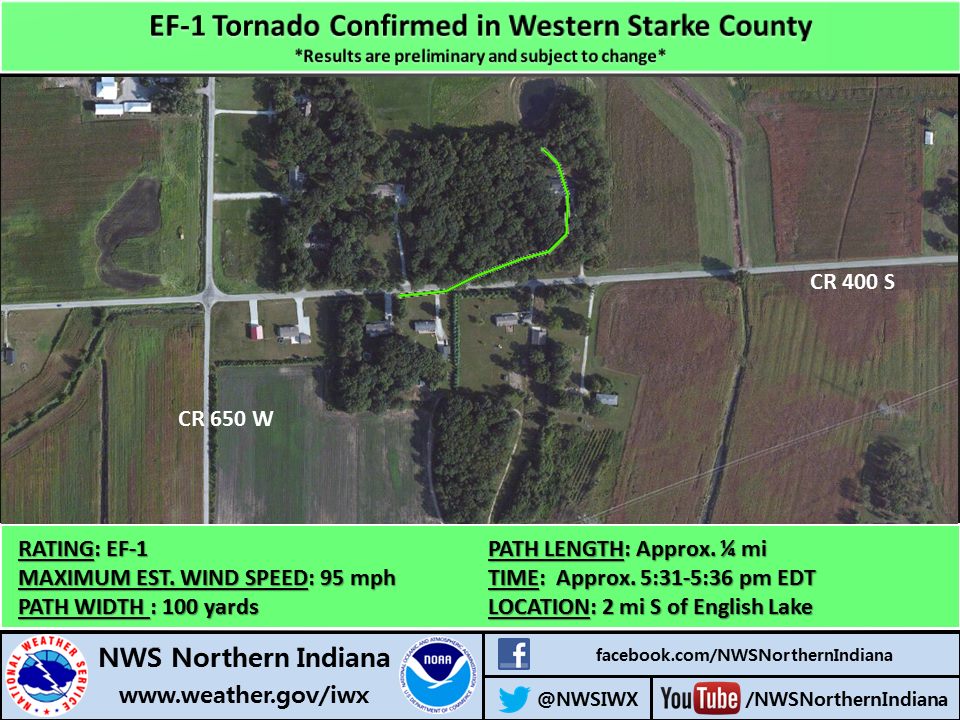
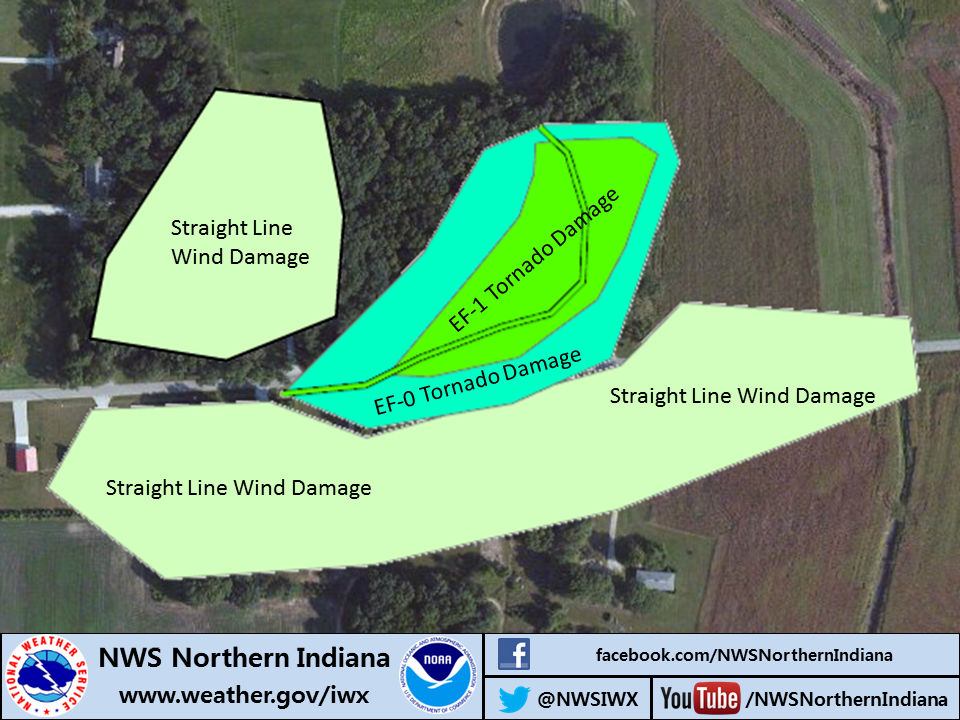
Click here for an overview of the damage survey.
PUBLIC INFORMATION STATEMENT
NATIONAL WEATHER SERVICE NORTHERN INDIANA
901 PM EDT MON JUN 8 2015 /801 PM CDT MON JUN 8 2015/
...NWS DAMAGE SURVEY FOR 06/07/15 TORNADO EVENT...
.OVERVIEW...
A BOWING LINE OF STORMS CAUSED WIND DAMAGE ACROSS STARKE AND
PULASKI COUNTIES ON JUNE 7TH. EVIDENCE OF A TORNADO WAS FOUND
ON THE NORTHERN EDGE OF THIS LINE IN WESTERN STARKE COUNTY.
.WESTERN STARKE TORNADO...
RATING: EF-1
ESTIMATED PEAK WIND: 95 MPH
PATH LENGTH /STATUTE/: 0.18 MILES
PATH WIDTH /MAXIMUM/: 100 YARDS
FATALITIES: 0
INJURIES: 0
START DATE: 06/07/15
START TIME: 0531 PM CDT
START LOCATION: 2 MI SOUTH OF ENGLISH LAKE
START LAT/LON: 41.2441/-86.8216
END DATE: 06/07/15
END TIME: 0536 PM CDT
END LOCATION: 2 MI SOUTH OF ENGLISH LAKE
END_LAT/LON: 41.2455/-86.8198
SURVEY_SUMMARY:
SPORADIC STRAIGHT LINE WIND DAMAGE WAS FOUND ALONG CR 750W
IN STARKE COUNTY BETWEEN CR 400S AND HIGHWAY 10. THE TORNADIC
DAMAGE WAS FOUND ALONG CR 400S BETWEEN CR 650W AND CR 600W.
A GARAGE WAS SHIFTED ON ITS FOUNDATION AT THE CORNER OF 650W
AND 400S. THIS DAMAGE WAS LIKELY CAUSED BY STRAIGHT LINE WINDS.
THE TORNADO TOUCHED DOWN IN THE VICINITY OF THE 6350 BLOCK OF
CR 400S AND CONTINUED ENE TO THE 6250 BLOCK OF CR 400S WHERE
4 TO 5 DOZEN TREES WERE EITHER UPROOTED OR SNAPPED. THERE WERE
NO TREES LEFT STANDING IN THE FRONT YARD OF THIS RESIDENCE.
THE TORNADO DISSIPATED SHORTLY AFTER AS IT TURNED TOWARDS THE
NORTHWEST AND CONTINUED INTO THE FIELD TO THE NORTH. THE
EXTENSIVE DAMAGE IN THIS ISOLATED AREA WAS LIKELY ASSOCIATED
WITH THE SLOW FORWARD MOTION OF THIS TORNADO AS WELL AS WET
SANDY SOIL IN THE AREA. IN ADDITION TO THE TREE DAMAGE... MOST
OF THE HOUSES ALONG 400W IN THAT STRETCH HAD SHINGLES AND SMALL
PORTIONS OF ROOFING MATERIALS REMOVED. A SHED ON THE EASTERN
EDGE OF THE PROPERTY AT THE 6250 BLOCK OF 400W WAS DESTROYED
AND PIECES OF THE SHED WERE FOUND IN THE WOODS WEST OF THE
HOUSE AND IN THE FIELD NORTH OF THE PROPERTY. WE WOULD LIKE TO
GIVE A SPECIAL THANKS TO STARKE COUNTY EMERGENCY MANAGEMENT FOR
THEIR ASSISTANCE WITH THE STORM SURVEY.
EF SCALE: THE ENHANCED FUJITA SCALE CLASSIFIES
TORNADOES INTO THE FOLLOWING CATEGORIES.
EF0...WEAK......65 TO 85 MPH
EF1...WEAK......86 TO 110 MPH
EF2...STRONG....111 TO 135 MPH
EF3...STRONG....136 TO 165 MPH
EF4...VIOLENT...166 TO 200 MPH
EF5...VIOLENT...>200 MPH
NOTE:
THE INFORMATION IN THIS STATEMENT IS PRELIMINARY AND SUBJECT TO
CHANGE PENDING FINAL REVIEW OF THE EVENT AND PUBLICATION IN
NWS STORM DATA.
$$
Daytime clouds and rain showers kept temperatures cool for most of the day, but breaks in the clouds later in the day allowed temperatures to quickly rise into the 80s in the SW portion of our forecast area. These warmer temperatures combined with a humid atmosphere provided the energy necessary for severe storms to develop during hte evening hours. Specific meteorological variables from this event can be seen in the table below.
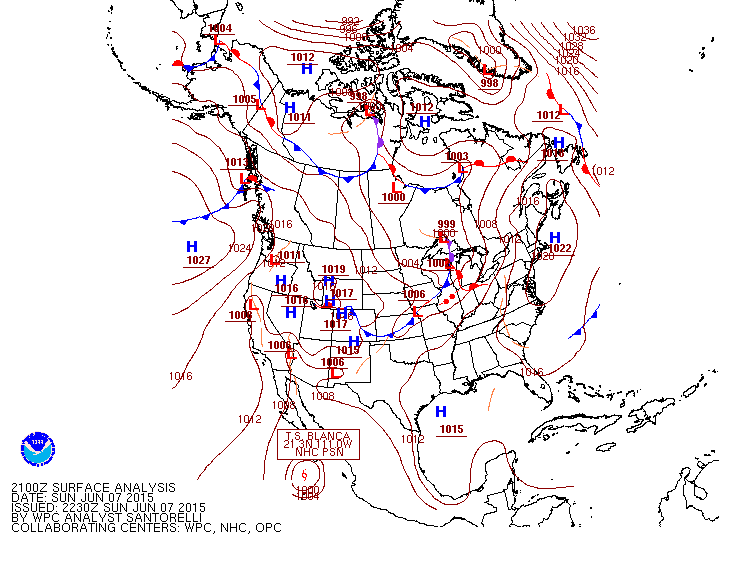 |
 |
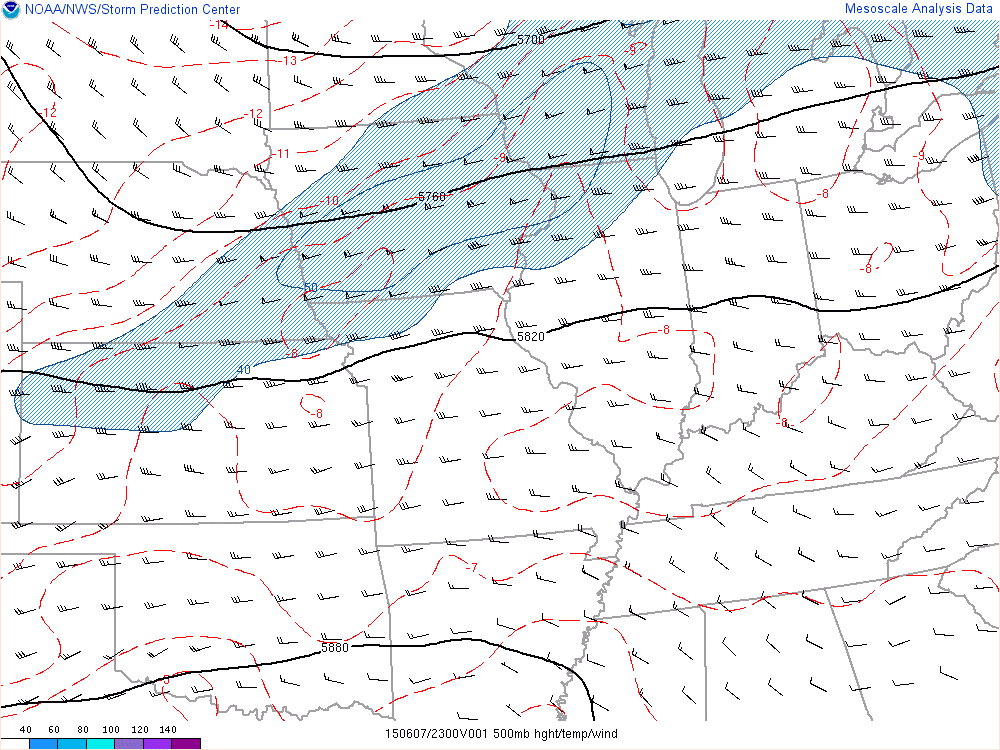 |
| Surface analysis (21Z) Shows a warm front just to the north of where the storms occurred, with a cold front to the west. |
850 mb analysis shows warm air/moisture being transported into the region. This helped to fuel and sustain thunderstorms as they developed in northern IL and moved into the local area. |
500 mb analysis shows a mid-level trough of low pressure, just to the west of the local area. This provided forcing for the thunderstorms to fire to the west before moving into the local area. |
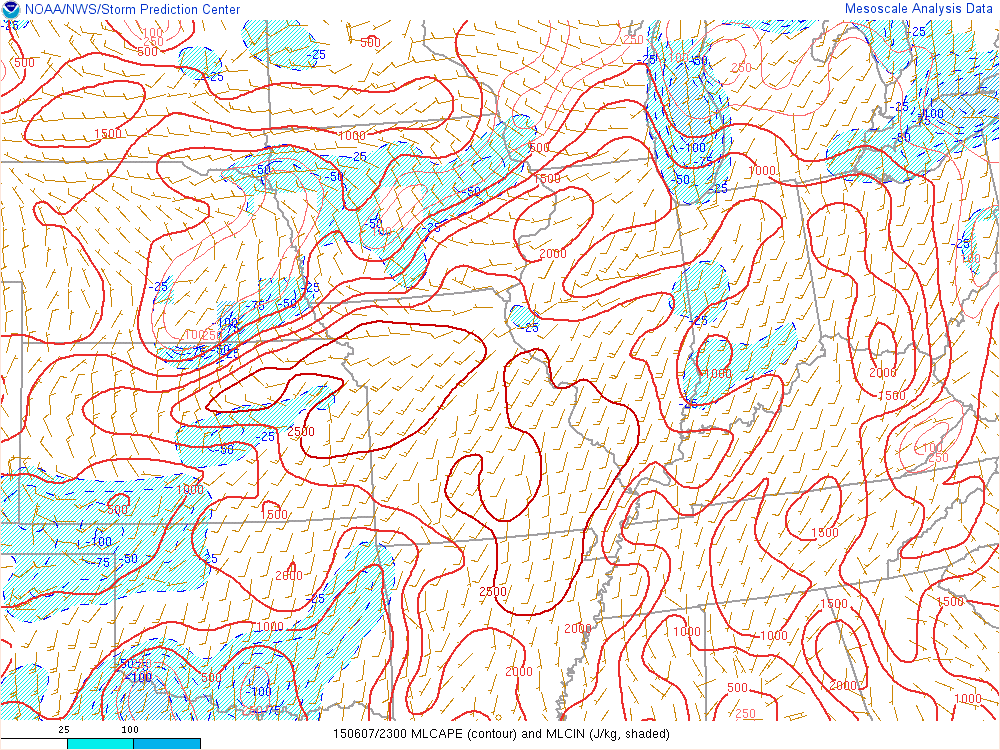 |
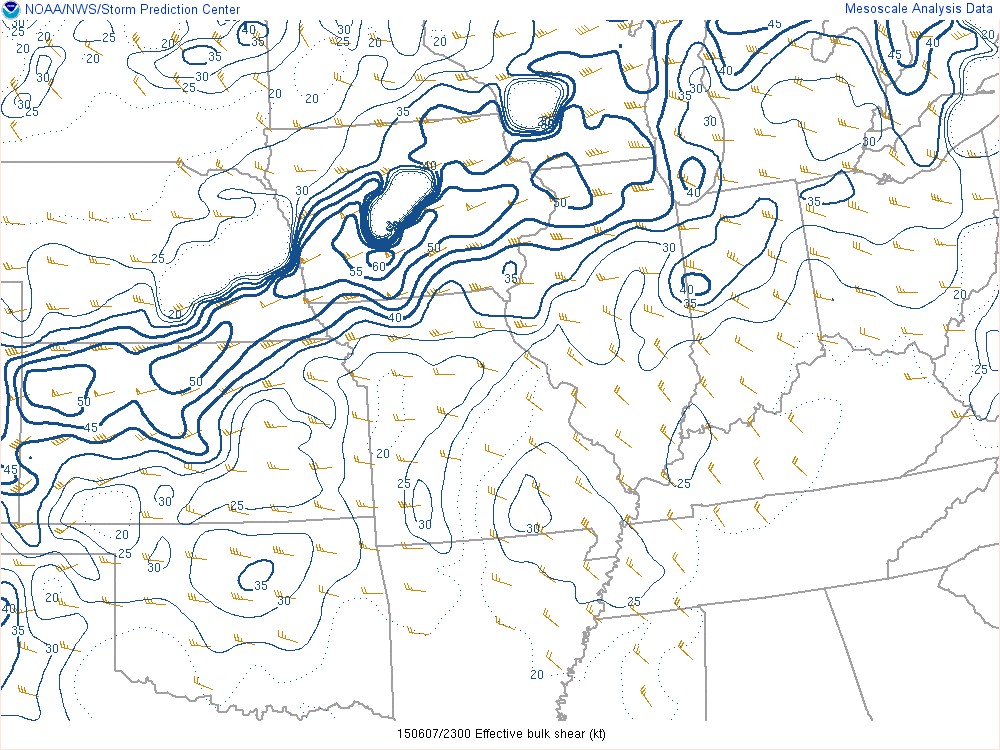 |
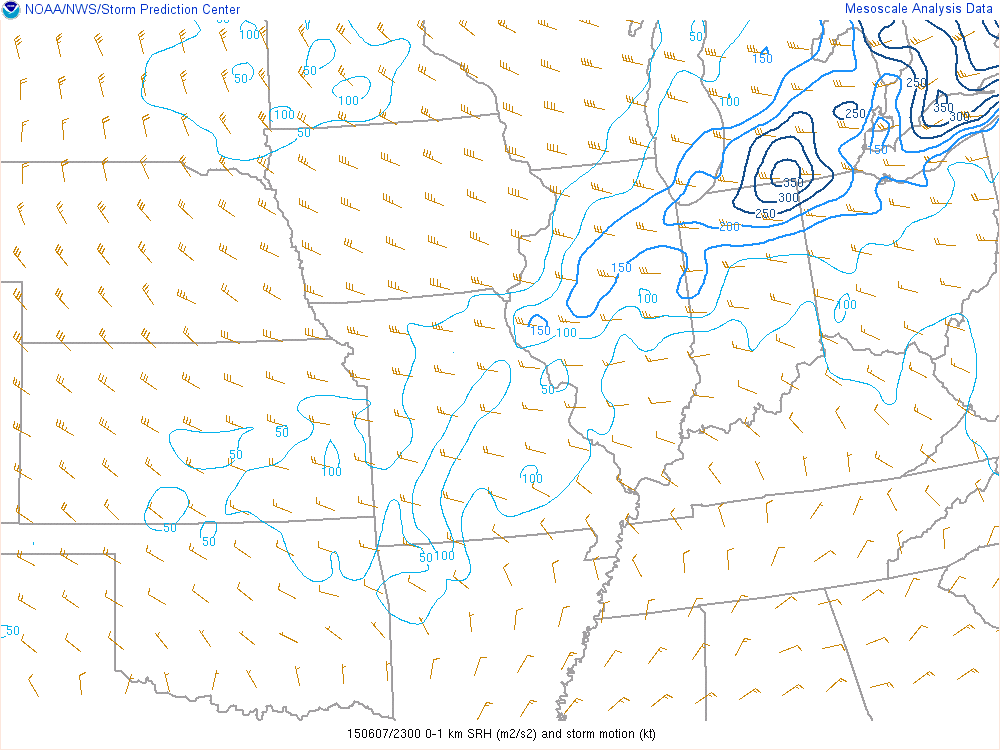 |
| MLCAPE Shows a warm front just to the north of where the storms occurred, with a cold front to the west. |
Effective Bulk Shear shows warm air/moisture being transported into the region. This helped to fuel and sustain thunderstorms as they developed in northern IL and moved into the local area. |
0-1km SRH shows a mid-level trough of low pressure, just to the west of the local area. This provided forcing for the thunderstorms to fire to the west before moving into the local area. |
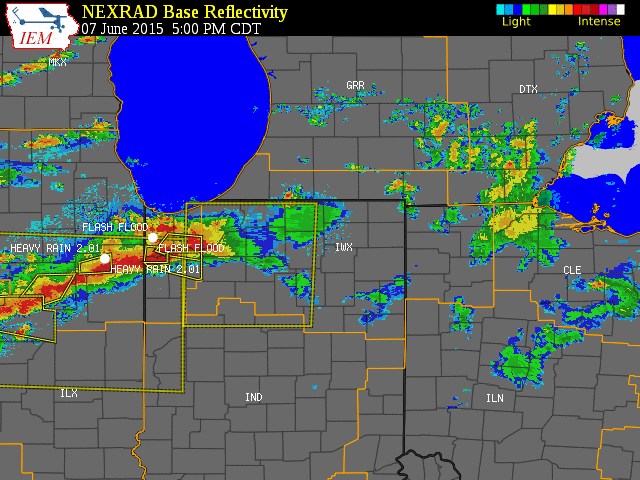
Below are the Storm Prediction Center Outlooks for the 3 days prior to this event.
| Storm Prediction Center Day 1 Outlook Issued 6/07/15 |
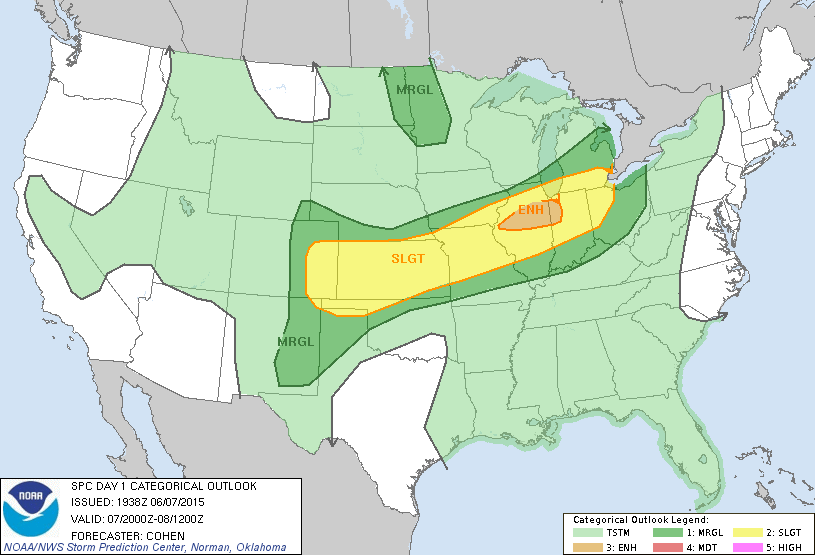 |
|
Storm Prediction Center Day 2 Outlook
Issued 6/06/15
|
Storm Prediction Center Day 3 Outlook
Issued 6/05/15
|
 |
 |








Updated 6/8/2015 1:32 PM EDT
MCD/Bentley/NG







